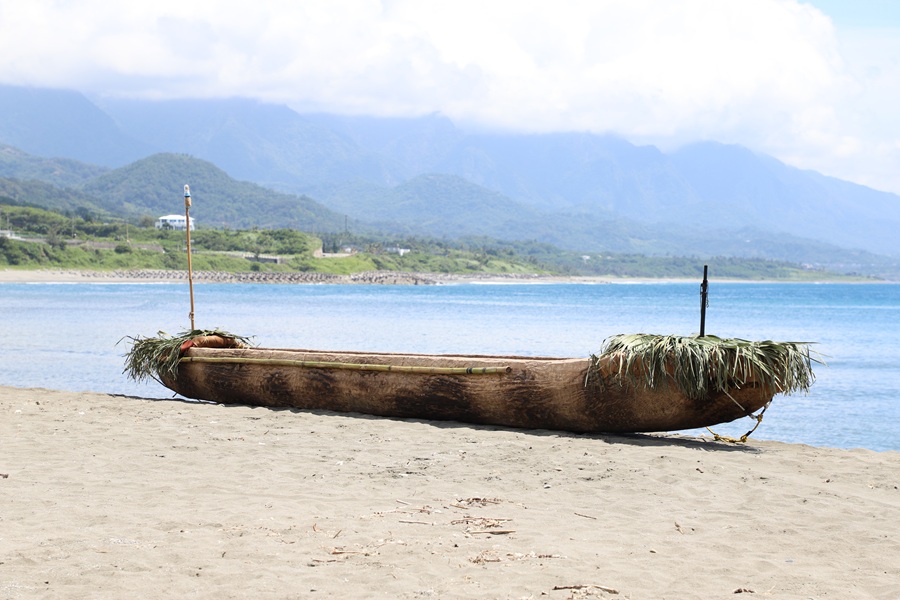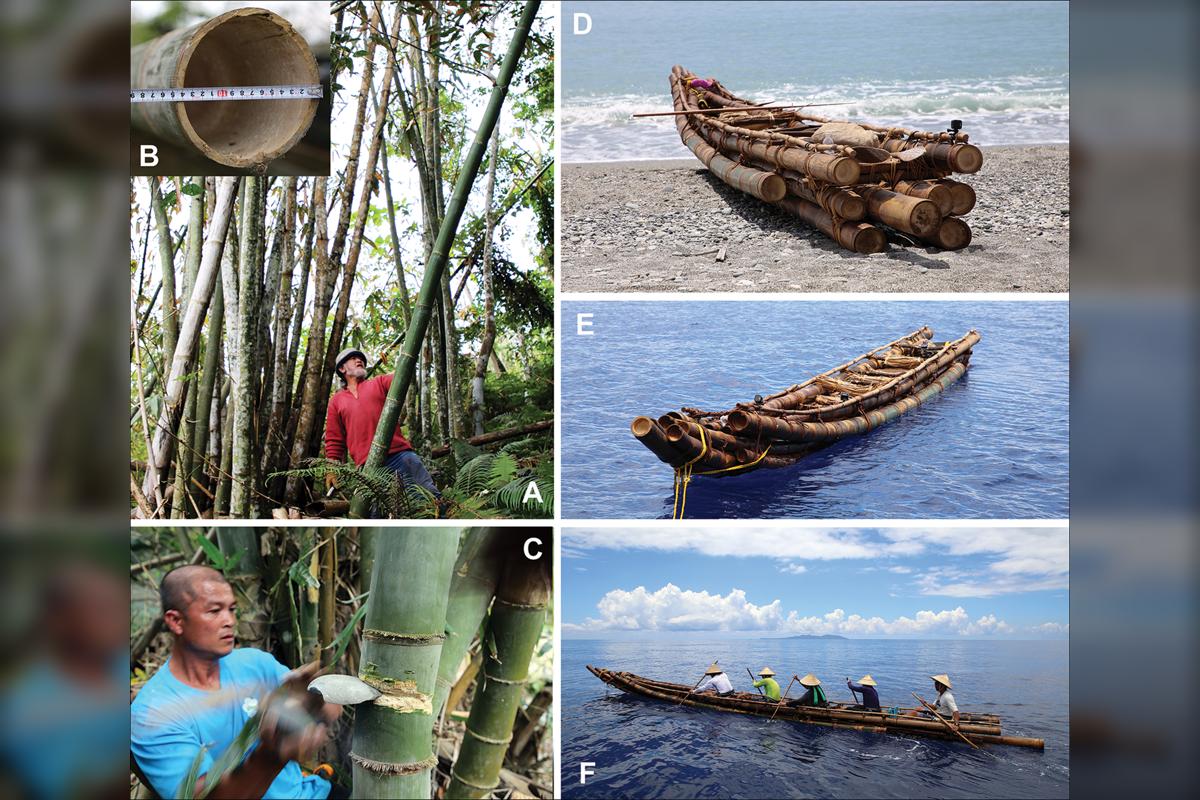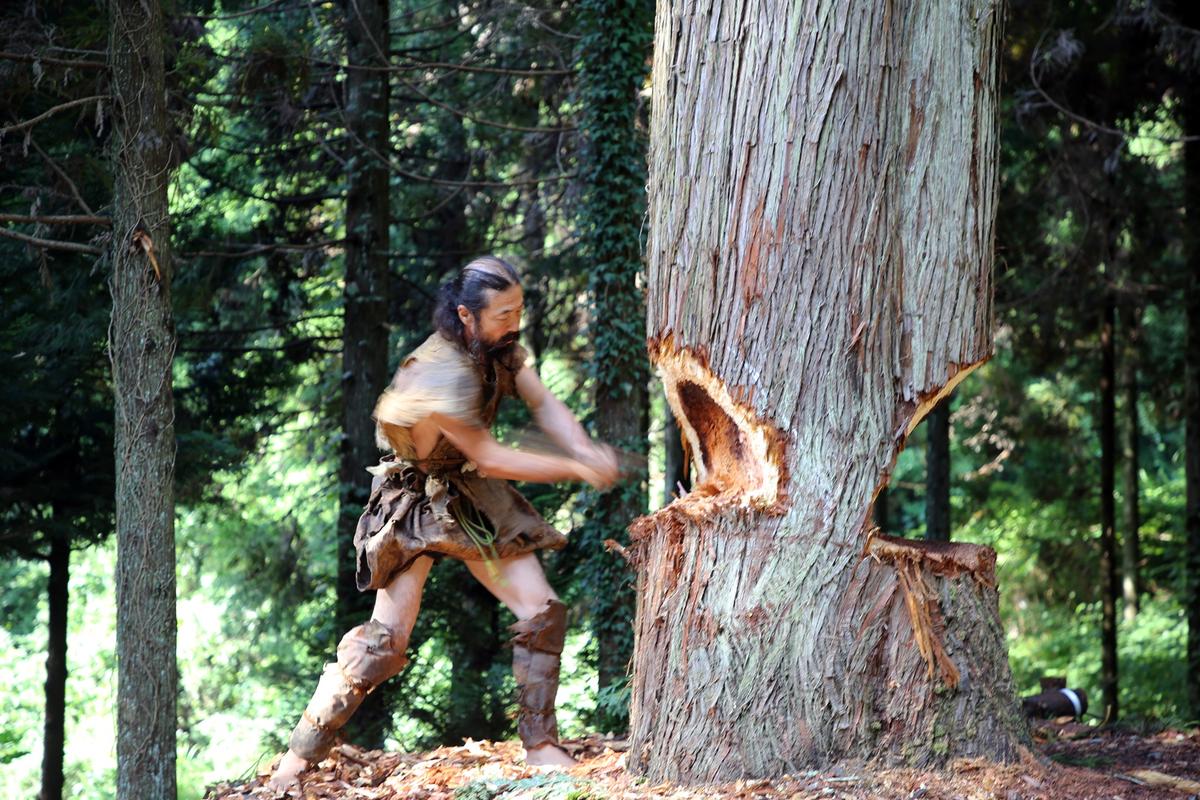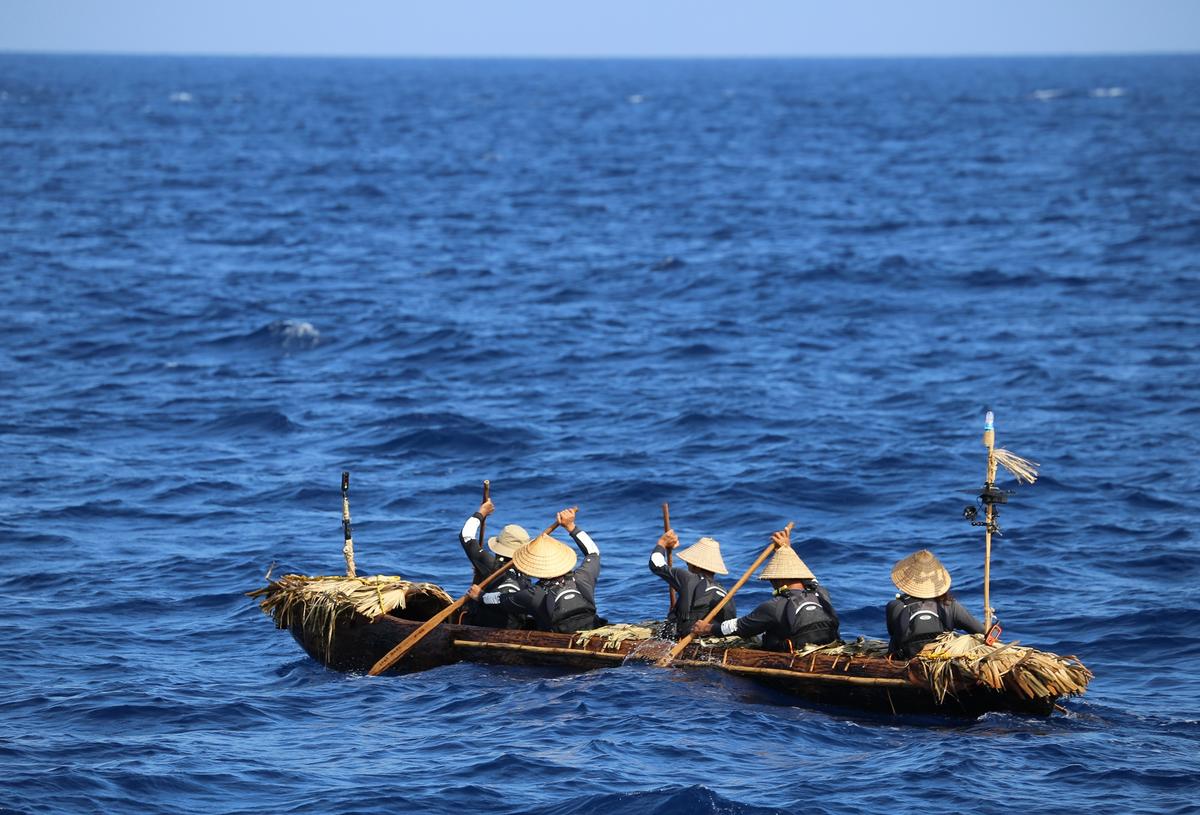Yonaguni, Japan —(Map)
Scientists from Japan and Taiwan may have solved an old mystery: how did ancient people with simple tools and little scientific knowledge make long, dangerous ocean trips to new places? To test their ideas, the researchers made a trip of their own in a canoe they built from a tree using stone tools.
The first humans began appearing in Japan around 30,000-35,000 years ago. Some may have arrived using land bridges that existed at the time. But scientists believe that others arrived by boat. It’s likely that ancient people crossed the sea from Taiwan to reach Japan’s Ryukyu islands.
 Scientists from Japan and Taiwan may have solved an old mystery: how did ancient people with simple tools make long, dangerous ocean trips to new places? To test their ideas, the researchers made a trip of their own in a canoe (above) they built from a tree using stone tools.
Scientists from Japan and Taiwan may have solved an old mystery: how did ancient people with simple tools make long, dangerous ocean trips to new places? To test their ideas, the researchers made a trip of their own in a canoe (above) they built from a tree using stone tools.
(Source: Kaifu et al., 2025, [CC-By-ND], via University of Tokyo.)
But it wasn’t clear what kinds of boats might have allowed ancient people to complete such a dangerous sea voyage. There are 70 miles (110 kilometers) of open ocean between Taiwan and Yonaguni, the nearest of the Ryukyu islands. To make things more difficult, the route crosses the Kuroshio current, which is one of the world’s strongest ocean currents.
Yousuke Kaifu is a scientist at the University of Tokyo. He has long wondered what kinds of boats ancient people could have used to make the trip. The people would have had no maps, no metal tools, and only the boats they could make by hand.
 Scientist Yousuke Kaifu wondered what kinds of boats ancient people could have used to make the trip from Taiwan to Japan’s Ryukyu islands. He and his team tested boats made of reeds and of bamboo (above). Both were too slow to handle the strong Kuroshio current.
Scientist Yousuke Kaifu wondered what kinds of boats ancient people could have used to make the trip from Taiwan to Japan’s Ryukyu islands. He and his team tested boats made of reeds and of bamboo (above). Both were too slow to handle the strong Kuroshio current.
(Source: Yousuke Kaifu [CC BY 4.0], via Cambrige.org.)
Dr. Kaifu and his team began by exploring reed boats. Since reeds float, the researchers used large bundles of reeds, strapped together with vines, to make boats. But a 2016 test showed that the boats were too slow to handle the strong Kuroshio current. The same was true of the bamboo boats the team tried in 2017 and 2018.
Finally, the team decided to investigate a “dugout canoe”, made from a hollowed-out tree. Again, they tried to do everything using only the tools available roughly 30,000 years ago. They made stone axes and used them to cut down a cedar tree that was three feet (91 centimeters) across.
 The team decided to investigate a “dugout canoe”, made from a hollowed-out tree. They tried to do everything using only the tools available roughly 30,000 years ago. They made stone axes and used them to cut down a cedar tree that was three feet (91 centimeters) across (above).
The team decided to investigate a “dugout canoe”, made from a hollowed-out tree. They tried to do everything using only the tools available roughly 30,000 years ago. They made stone axes and used them to cut down a cedar tree that was three feet (91 centimeters) across (above).
(Source: Kaifu et al., 2025, [CC-By-ND], via University of Tokyo.)
Then, still using stone tools, they hollowed out the log. Their efforts turned the log into a 25-foot (7.5-meter) canoe.
In July of 2019, four men and one woman set out from Wushibi, Taiwan in the canoe. Their goal, Yonaguni, was 140 miles (225 kilometers) away. And to get there, they’d have to make it across the Kuroshio current.
To guide them, the boat’s crew could only use things that they could see, like the stars and the sun. The trip was exhausting. But after 45 hours – nearly two days – of paddling, they arrived at Yonaguni.
 In July of 2019, four men and one woman paddled 140 miles (225 kilometers) from Wushibi, Taiwan to Yonaguni (above). It took over 45 hours, but the crew made it across the Kuroshio current and arrived safely at Yonaguni.
In July of 2019, four men and one woman paddled 140 miles (225 kilometers) from Wushibi, Taiwan to Yonaguni (above). It took over 45 hours, but the crew made it across the Kuroshio current and arrived safely at Yonaguni.
(Source: Kaifu et al., 2025, [CC-By-ND], via University of Tokyo.)
Dr. Kaifu says, “We now know that these canoes are fast and durable [tough] enough to make the crossing.” But he adds that the success of such a crossing in the past would have depended greatly on the skill of the crew.
“Those male and female pioneers must have all been experienced paddlers,” he said. The researchers’ report points out that in spite of their very basic tools, the ancient sailors managed to do something that was “extraordinary”.
😕
This map has not been loaded because of your cookie choices. To view the content, you can accept ‘Non-necessary’ cookies.


AloJapan.com